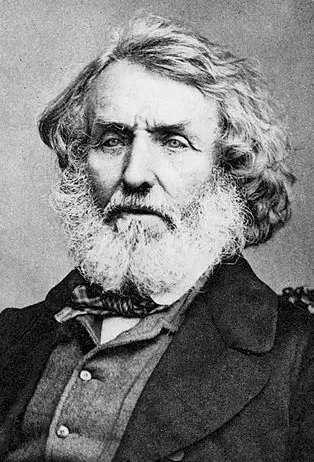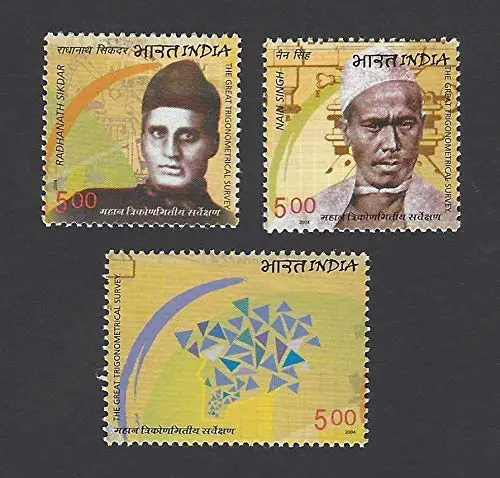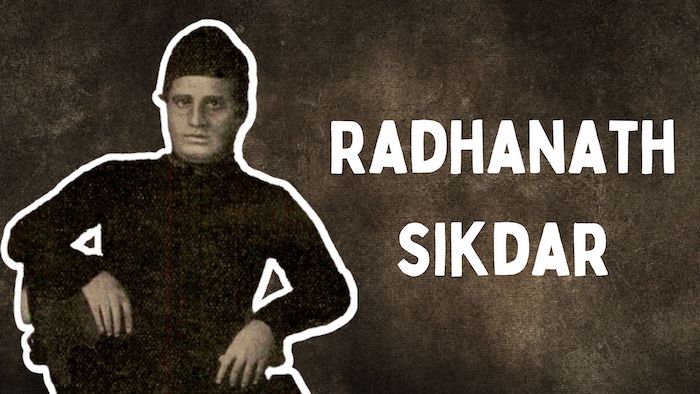Radhanath Sikdar (5 October 1813 – 17 May 1870) was an eminent Indian mathematician renowned for calculating Mount Everest’s height. In 1852, he became the first person to accurately compute the mountain’s towering elevation.
George Everest’s Quest for a Mathematician: Discovering Radhanath Sikdar

In 1831, George Everest, the Surveyor General of India and whom Mount Everest was eventually named after, sought a skilled mathematician proficient in Spherical Trigonometry to join the Great Trigonometric Survey. Under Everest’s leadership, the longitudinal series of the “triangle” survey was completed in 1832, spanning from Sironj in Central India to Calcutta in Bengal.
While engaged in mapping Calcutta, Everest searched for a mathematician. Eventually, John Tytler, a professor of Mathematics at the Hindu College (now Presidency College), suggested his 19-year-old student, Radhanath Sikdar, for the role.
Radhanath, a college student since 1824, stood among the first two Indians to delve into Isaac Newton’s Principia. By 1832, he had delved into Euclid’s Elements, Thomas Jephson’s Fluxion, Analytical Geometry, and Windhouse’s Astronomy. Even in his teenage years, Radhanath exhibited brilliance, devising a novel technique to draw a common tangent to two circles. His proficiency in mathematics was beyond doubt, earning him a position at the GTS as a “computer” with a monthly salary of thirty rupees.
Dispatched to Sironj near Dehradun, Radhanath worked alongside seven other Bengali ‘computers’. He showcased his exceptional mathematical acumen and earning him the favor of George Everest, who halted his potential transfer to another department. Radhanath’s primary role involved geodetic surveys, meticulously studying the earth’s geometric shape, orientation in space, and gravitational field. Unbound by conventional methods, he devised his own innovative approaches to precisely measure these crucial factors.
Radhanath Sikdar’s Discovery: Mount Everest’s True Height

In 1843, Colonel George Everest retired, passing the baton to Colonel Andrew Scott Waugh. Eight years later, in 1851, Radhanath received a promotion to Chief Computer and relocated to Calcutta, where he also served as a superintendent for the Meteorological Department.
Upon Colonel Waugh’s directive, Radhanath embarked on mountain height measurements. Despite never having seen Mount Everest, the brilliant mathematician made a groundbreaking discovery in 1852. He revealed that Kangchenjunga, long believed to be the tallest peak in the world, was not the true record-holder. Through meticulous analysis of six observations, Radhanath concluded that Mount Everest was indeed the world’s tallest mountain.
During the computations of northeastern observations, Radhanath precisely calculated Peak XV’s height as 29,000 ft (8839 m). However, Waugh added an arbitrary two feet to avoid the misconception that it was merely a rounded estimate. In March 1856, the official announcement of this finding was made, and it remained Mount Everest’s height until an Indian survey recalculated it to be 29,029 ft (8848 m) in 1955.
Mount Everest’s height calculation has greatly benefited from technological progress and data collected from numerous climbers. Unveiling various summit routes has contributed to a more accurate measurement of this ever-changing peak, which grows 4 mm taller annually and gradually shifts northeastward with each passing year.
Radhanath Sikdar’s Contribution: Brilliant Mathematician and Strained Relations

Despite being praised for his mathematical abilities by Everest and Waugh, Babu Radhanath Sikdar had strained relations with the colonial administration. Two instances highlight this fact.
Firstly, in 1851, the Survey Department published a Survey Manual edited by Capt. H. L. Thullier and Capt. F. Smyth. The preface of this Manual acknowledged Radhanath Sikdar as the author of the more technical and mathematical chapters, proving immensely useful to surveyors. However, in the third edition published in 1875, the preface was inexplicably omitted, effectively erasing Sikdar’s significant contribution. This incident drew criticism from some British surveyors, and it was referred to as the ‘robbery of the dead’ in the 1876 paper Friend of India.
Secondly, in 1843, Sikdar vehemently protested against the unjust treatment of survey department workers by Magistrate Vansittart. As a result, he was fined 200 rupees. This incident was extensively covered in The Bengal Spectator, edited by Ramgopal Ghosh.
In addition to his professional pursuits, in 1854, Sikdar, together with his friend Peary Chand Mitra, founded the Bengali journal Masik Patrika, aimed at promoting education and women’s empowerment. Sikdar wrote in a simple and uncluttered style, setting himself apart from the prevailing norms of his time.
After retiring from service in 1862, Sikdar took on the role of a mathematics teacher at the General Assembly’s Institution, which is now known as the Scottish Church College.
Radhanath Sikdar’s Mathematical Recognition and Commemorative Stamp

Sikdar’s mathematical abilities earned him recognition from the German Philosophical Society’s Bavaria branch of Natural Science. They honored him by appointing him as a Corresponding Member in 1864, just two years after his retirement.
In honor of the establishment of the Great Trigonometric Survey in Chennai, India on 10 April 1802, the Department of Posts, Government of India, issued a commemorative postal stamp on 27 June 2004. This stamp features Radhanath Sikdar and Nain Singh, two remarkable contributors to society.
On 17 May 1870, Radhanath Sikdar died in Chandernagore and was laid to rest at the Sacred Heart Cemetery.
